Prices in Different Metro Cities
Key Highlights
-
Displacement124.4 cc
-
Mileage55 kmpl
-
Top Speed100+ Kmph
-
Kerb Weight140 kg
-
Fuel Tank Capacity11.5 litres
-
Seat Height790 mm
Latest on Bajaj Pulsar 125 Neon
- The Bajaj Pulsar 125 Neon was launched in June 2020.
- In July 2022, the Bajaj Pulsar Neon got expensive by around Rs 500 to Rs 1000
- The bike is available in two variants: disc brake and drum brake
- The latest price of the Pulsar 125 Neon is disc brake: Rs 90,000 and drum brake: Rs 84,000
Introduction of Bajaj Pulsar 125 Neon
Bajaj is an expert at creating genres and even using those that already exist to their advantage. A good example is the brand-new Bajaj Pulsar 125 Neon.
A more powerful engine than the competition, a less expensive pricing than products from other manufacturers in the sector, and a recognisable larger motorcycle style. These accurately describe the new Bajaj Pulsar 125 Neon.
It should be noted that Bajaj has made previous attempts to dominate this market, albeit with limited success. Will their most recent attempt to enter the growing 125cc market succeed?
The Pulsar 125 Neon is the model in the Pulsar lineup with the lowest price. The bike’s main feature is that it looks just like the Pulsar 150. As a result, owners of the Pulsar 125 Neon receive the aesthetics of the more expensive Pulsar at a lesser price.
A 124.4cc, single-cylinder, air-cooled engine coupled to five-speed gearbox power the Pulsar 125 Neon. The engine can produce 12 horsepower and 11 nm of torque, respectively.
In short, the bike looks like the perfect new-age ride for comfortable city and highway rides.
What’s new in Bajaj Pulsar 125 Neon?
Although this design has been around for a while, the Bajaj Pulsar 125 Neon shares many similarities with the Bajaj Pulsar 150 Neon, which is not necessarily a negative since it is still a beautiful motorbike.
The 125 Neon has a smaller gasoline tank than the 150 Neon, which is the sole distinction between the two motorbikes. Additionally, because it is the new Neon model, the motorbike also features several striking highlights.
Although the Pulsar Neon 125’s kerb weight has decreased by 4 kilogrammes due to its smaller fuel tank, it still weighs more than any other motorbike in its class by at least 15 kilos.
Contrary to one may anticipate, Bajaj did not make any compromises to keep the bike’s pricing competitive. The Pulsar 125’s build quality has a new feature that puts it above the rest of its competitors.
Highlights of Bajaj Pulsar 125 Neon
Design of Bajaj Pulsar 125 Neon
The Pulsar brand has completely transformed the Indian two-wheeler sector. The Bajaj Pulsar 125 Neon is introduced to appeal to the same customers who adore the classic style and intimidating appearance of the original Pulsar.
Compared to the majority of 125cc bikes in the nation, which are pretty plain-looking, it has a bigger, more aggressive, and hence more imposing appearance. The side panel mesh, Pulsar logo, and pillion grab rail are all colour-coordinated.
The front headlight of the bike is a conventional halogen unit, while the rear light is an LED. The dual-LED taillamps ensure the design is balanced and doesn’t appear overly threatening despite the aggressive appearance.
Colour and variants of Bajaj Pulsar 125 Neon
The Bajaj Pulsar 125 Neon is available in 12 colours:
- Neon Green
- Neon Silver
- Solar Red
- Neon Silver
- Solar Red
- Neon Silver
- Solar Red, etc.
The Bajaj Pulsar 125 Neon is available in two variants
- Drum
- Disc
These versions of the 125 Neon are offered, with each trim coming with either a basic single seat or a sportier split-seat option.
Engine of Bajaj Pulsar 125 Neon
The Bajaj Pulsar NS125’s 160.3cc engine is a scaled-down version of the NS160’s. Hence you receive a brand-new 124.45cc, air-cooled, 2-valve SOHC engine that produces 11Nm at 7000 rpm and 12PS at 8500 rpm. It has a 5-speed gearbox built in.
The conventional perimeter frame used on all Pulsar NS models houses this new motor. The monoshock appears to have come from the NS160, while the thin telescopic fork, narrow tyres, and brake components appear to have been taken directly from the standard Pulsar 125.
Features of Bajaj Pulsar 125 Neon
Contrary to popular belief, Bajaj made no concessions to maintain the bike’s affordability. The only visual differences between the Pulsar 125 and Pulsar 150 are the badging and coloured accents on the motorcycles.
The semi-digital cluster appears a little old, with just two trip metres, an odometer, and a few warning lights transmitted back to the rider.
For an upscale touch, Bajaj gave the Pulsar 125 illuminated switches.
The more costly Split Seat model includes a split-seat arrangement, split pillion grab rails, and an engine cowl.
The LED tail light and halogen headlight are nearly identical to those on the NS160 and NS200.
Brakes and transmission of Bajaj Pulsar 125 Neon
The 125 Neon have dual gas-charged rear shocks and a traditional telescopic front fork on a double-cradle frame.
At the front, you may choose between a 240mm disc and a 170mm drum brake; the 130mm drum brake is unaffected. All variations have CBS as standard.
Pros and Cons of Bajaj Pulsar 125 Neon
Pros
- Features an attractive paint scheme
- Gets sporty clip-on handlebars
- Top-notch build quality
Cons
- Not the comfiest of rides
- The engine feels a bit strained at high speeds
- Heaviest of all 125s bikes in India
Specifications & Features
Power & Performance
-
Fuel TypePetrol
-
Max Power11.64 bhp @ 8,500 rpm
-
Max Torque10.8 Nm @ 6,500 rpm
-
Emission StandardBS-VI
-
Displacement124.4 cc
-
Cylinders1
-
Bore56 mm
-
Stroke50.5 mm
-
Valves Per Cylinder2
-
Compression Ratio10.22 +/- 0.3 :1
-
IgnitionDigital Twin Spark Ignition
-
Spark Plugs2 Per Cylinder
-
Cooling SystemAir Cooled
-
Transmission5 Speed Manual
-
Transmission TypeChain Drive
-
Gear Shifting Pattern1 Down 4 Up
-
ClutchWet Multi Plate
-
Fuel Delivery SystemFuel Injection
-
Fuel Tank Capacity11.5 litres
-
Reserve Fuel Capacity2.5 litres
-
Riding Range575 Km
-
Mileage - ARAI55 kmpl
-
Mileage - Owner Reported50 kmpl
-
Top Speed100+ Kmph
-
Engine Type4-stroke
Brakes, Wheels & Suspension
-
Braking SystemCBS
-
Front Brake TypeDrum
-
Front Brake Size170 mm
-
Rear Brake TypeDrum
-
Rear Brake Size130 mm
-
Calliper TypeNo
-
Wheel TypeAlloy
-
Front Wheel Size17 inch
-
Rear Wheel Size17 inch
-
Front Tyre Size80/100 - 17
-
Rear Tyre Size100/90 - 17
-
Tyre TypeTubeless
-
Radial TyresNo
-
Front Tyre Pressure (Rider)25 psi
-
Rear Tyre Pressure (Rider)28 psi
-
Front Tyre Pressure (Rider & Pillion)25 psi
-
Rear Tyre Pressure (Rider & Pillion)32 psi
-
Front SuspensionTelescopic
-
Rear SuspensionTwin Gas Shock
Dimensions & Chassis
-
Kerb Weight140 kg
-
Overall Length2,055 mm
-
Overall Width755 mm
-
Overall Height1,060 mm
-
Wheelbase1,320 mm
-
Ground Clearance165 mm
-
Seat Height790 mm
-
Chassis TypeSingle down tube
Manufacturer Warranty
-
Standard Warranty (Year)5 Year
-
Standard Warranty (Kilometers)75000 Kilometers
Features
-
OdometerDigital
-
DRLs (Daytime running lights)No
-
Mobile App ConnectivityNo
-
USB charging portNo
-
Front storage boxNo
-
Under seat storageNo
-
AHO (Automatic Headlight On)Yes
-
SpeedometerDigital
-
Fuel GuageYes
-
TachometerAnalogue
-
Stand AlarmYes
-
Stepped SeatNo
-
No. of Tripmeters2
-
Tripmeter TypeDigital
-
Low Fuel IndicatorYes
-
Low Oil IndicatorNo
-
Pillion BackrestNo
-
Pillion GrabrailYes
-
Pillion SeatYes
-
Pillion FootrestYes
-
Digital Fuel GuageYes
-
Start TypeElectric Start
-
Shift LightYes
-
KillswitchYes
-
ClockYes
-
Battery12V Full DC MF
-
Headlight TypeHalogen
-
Brake/Tail LightLED Taillamp
-
Turn SignalYes
-
Pass LightYes
-
Additional featuresSplit Grab Rails
Expert Reviews
The only significant changes between the new Bajaj Pulsar 125 Neon and its predecessor are the neon detailing and the absence of a belly pan or tank shrouds. The new Bajaj Pulsar 125 Neon has remained intact and unaffected by the passage of time.
The engine is identical to that used in the 150s, but Bajaj decreased its cubic capacity to just under 125 by reducing the stroke, which went from 60.7mm to 50.5mm.
The 125 will excel as a daily commuter because of the suspension’s soft ride and the comfort of the rider and pillion seats.
Top 3 Competitors of Bajaj Pulsar 125 Neon
Bajaj Pulsar 125 Neon vs Hero Splendour Plus
The Bajaj Pulsar 125 Neon is more advanced than the Splendor Plus. But given that the market for Splendour is rising will Bajaj Pulsar 125 Neon make its space?
A brand-new, 2-valve SOHC engine with 124.45cc displacement is used to power the Bajaj Pulsar 125 Neon. At 7000 rpm, it produces 11Nm, and at 8500 rpm, 12PS. It has a 5-speed internal gearbox.
The Hero Splendor Plus has the following engine specifications:
- A 97.2cc, air-cooled, single-cylinder engine combined with a 4-speed sequential gearbox
- The engine can produce a maximum of 8.02 PS and a maximum torque of 8.05 Nm.
- Additionally, the most advanced version of Splendor includes a self-start feature.
The Hero Splendor Plus includes a modest amount of standard equipment, including alloy wheels, tubeless tyres, analogue speedometer and odometer, kick start, and drum brakes (with the integrated braking system, or IBS). You also get self-start and i3S start/stop technology with higher trims (for better fuel economy). LED lights are not available
Bajaj equipped the Pulsar 125 Neon with LED switches as a premium touch. The semi-digital cluster seems dated, with only two trip metres, an odometer, and a few warning lights communicated back to the rider. The more expensive Split Seat variant comes with an engine cowl, split pillion grab rails, and a split-seat configuration.
Three variations of the Hero Splendor Plus include:
- Kick Start and Alloy Wheels,
- Self Start and Alloy Wheels
- Self Start and Alloy Wheels with i3S.
The Pulsar 125 Neon comes in two variations:
- Drum brake
- Disc brake
The Splendor is priced between Rs 60,000 to Rs 70,000, and the Bajaj Pulsar 125 Neon is between Rs 84,000 and 90,000.
Bajaj Pulsar 125 Neon vs Hero HF 100
A brand-new, 2-valve SOHC engine with 124.45cc displacement powers the Bajaj Pulsar 125 Neon. At 7000 rpm, it produces 11Nm, and at 8500 rpm, 12PS. It has a 5-speed internal gearbox. The small telescopic fork, narrow tyres, and brake components seem to have been taken directly from the basic Pulsar 125, while the monoshock originated from the NS160.
A 97.2cc, air-cooled, single-cylinder engine paired with 4-speed sequential gearbox powers the Hero HF 100. The engine’s maximum power and torque are 8.02 PS and 8.05 Nm, respectively. The Hero HF has a kick starter and fuel injection standard in the BS6 period, and the most current variants include a self-start feature.
Bajaj Pulsar 125 Neon has the following features:
- Bajaj added LED switches.
- The semi-digital cluster appears a little archaic, with only two trip metres, an odometer, and a few warning lights communicating back to the rider.
- The more costly Split Seat model has a split pillion grab rail, an engine cowl, and split seats.
- The halogen headlamp and LED taillight are almost exact replicas of those on the NS160 and NS200.
The Hero MotoCorp HF Deluxe:
- delivers excellent performance, is the perfect choice for customers who value mileage, and makes good financial sense.
- In addition to performance and mileage, this bike has attracted buyers because of its attractive qualities.
The Pulsar 125 Neon gets priced between Rs 84,000 and 90,000, and the Hero HF is priced between Rs 48,000 and 55,000.
Bajaj Pulsar 125 Neon vs TVS Jupiter 125
The Bajaj Pulsar 125 Neon‘s engine has:
- A 5-speed internal gearbox. A brand-new, air-cooled, 2-valve SOHC engine with 124.45cc
- At 7000 rpm, it produces 11Nm, and at 8500 rpm, 12PS
- Small telescopic fork, narrow tyres, and brake components
Talking about TVS Jupiter 125, the engine works fluidly and gracefully, with a peak speed of 90 Kmph. The single-cylinder, 124.8 cc, and two-valve engine generate 8.04 horsepower at 6,500 rpm and 10.5 Nm of maximum torque at 4,500 rpm.
Bajaj added LED switches to the Pulsar 125 Neon as an upscale touch. The more costly Split Seat model has a split pillion grab rail, an engine cowl, and split seats. The semi-digital cluster appears a little archaic, with only two trip metres, an odometer, and a few warning lights communicating back to the rider.
The Jupiter 125 features a 65 mm seat, and riders of different heights and sizes may ride in comfort and they are neutral and comfortable.
Jupiter 125 sets new standards for usability as it has a front gas filler cap, an industry-leading 33-litre under-seat storage space, and a 2-litre front cubby with a USB port.
The Bajaj Pulsar 125 Neon is priced between Rs 84,000 to Rs 90,000, and the TVS Jupiter 125 is priced from Rs 78,000 to Rs 85,000.
Compare of Bajaj Pulsar 125 Neon
- Model
- Price
- Displacement
- Max Torque
- Max Power
- Fuel Type
- Fuel Tank Capacity
- Cooling System
- Kerb Weight
- Front Tyre Size
- Rear Tyre Size
- Mileage
- Wheel Type
- Front Brake Type
- Rear Brake Type
- Engine Type
Bajaj Pulsar 125 Neon
- Rs 81,178Rs 80,090Rs 79,418Rs 82,509Rs 79,571Rs 81,178
- 124.4 cc
- 10.8 Nm @ 6,500 rpm
- 11.64 bhp @ 8,500 rpm
- Petrol
- 11.5 litres
- Air Cooled
- 140 kg
- 80/100 - 17
- 100/90 - 17
- 55 kmpl
- Alloy
- Drum
- Drum
- 4-stroke
Honda Unicorn
- Rs 1.05 LakhRs 1.04 LakhRs 1.05 LakhRs 1.07 LakhRs 1.05 LakhRs 1.05 Lakh
- 162.7 cc
- 14 Nm @ 5,500 rpm
- 12.73 bhp @ 7,500 rpm
- Petrol
- 13 litres
- Air Cooled
- 140 kg
- 80/100-18
- 100/90-18
- 60 kmpl
- Alloy
- Disc
- 240 mm
- 4 Stroke &SI & BS-VI Engine
- View more
YAMAHA FZ-X
- Rs 1.34 LakhRs 1.33 LakhRs 1.32 LakhRs 1.35 LakhRs 1.34 LakhRs 1.34 Lakh
- 149 cc
- 13.3 Nm @ 5,500 rpm
- 12.2 bhp @ 7,250 rpm
- Petrol
- 10 litres
- Air Cooled
- 139 kg
- 100/80 - 17
- 140/60 - R17
- 45 kmpl
- Alloy
- Disc
- Disc
- 4-stroke
- View more
Conclusion
The Bajaj Pulsar 125 Neon succeeds in achieving its goals. It is the most powerful bike in the 125cc market and may even be the most sporty, except the KTM 125 Duke, which costs almost twice as much. However, Bajaj has once again outperformed the competition with pricing comparable to competitors like the Honda CB Shine SP or the Hero Glamour.
In the end, the Bajaj Pulsar 125 Neon makes sense for someone searching for a bike in the commuter market that is less ordinary and gives an experience that keeps loyal to the Pulsar legacy, even if it is done in a more subdued and cheap way.
FAQs of Bajaj Pulsar 125 Neon
How is the engine performance of the Bajaj Pulsar 125 Neon?
Even if the engine is strong, some vibrations on the Bajaj Pulsar 125 Neon can be felt through the footpegs after 6,000 RPM, but this is not a motorbike that would be driven to the maximum.
Is Bajaj Pulsar 125 Neon a comfortable ride on highways and city roads?
The Bajaj Pulsar 125 Neon rides effortlessly on highways and can easily handle city streets. The easy riding posture also makes it possible to ride this motorbike for extended periods without experiencing any discomfort.
What is the mileage of the Bajaj Pulsar 125 Neon?
The mileage of Bajaj Pulsar 125 Neon is 51.46 kmpl.
What is the start type of Pulsar 125 Neon?
Its both kick and self start.
Latest From Our Blog
© 2024 Riders Rally. All rights reserved. Design & Developed by Saman Technosys.
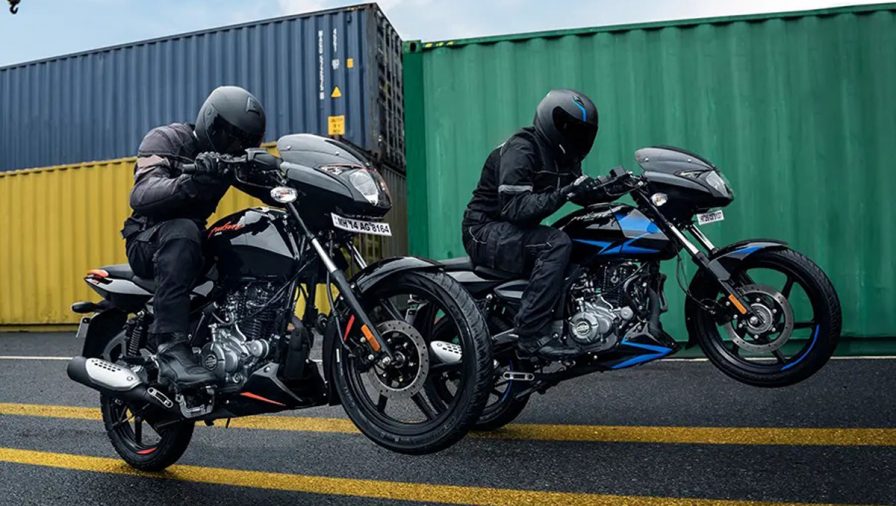
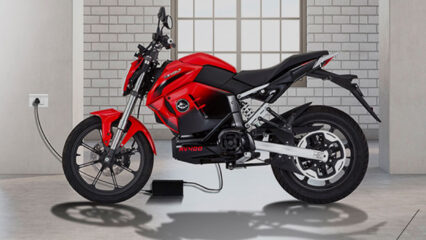
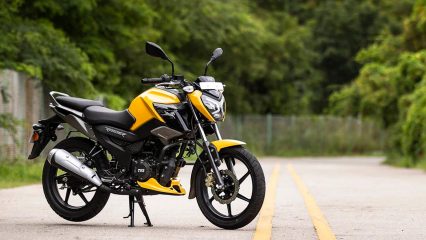
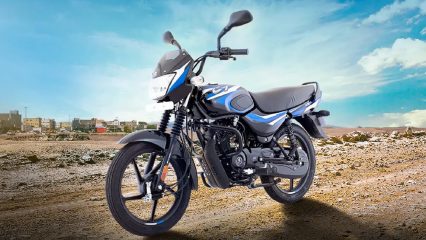
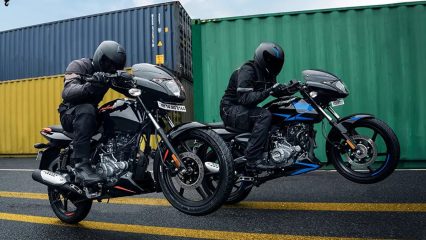


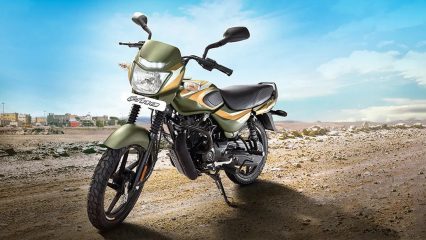
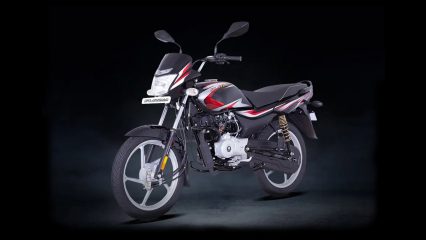
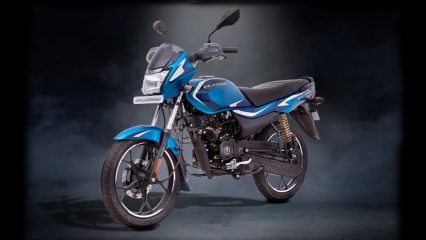




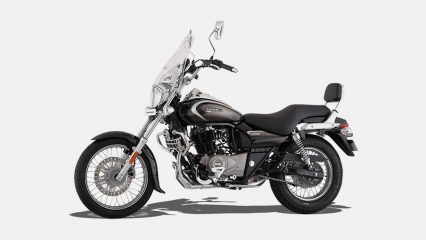







![8 Upcoming Adventure Bikes in India [year] 24 Riders Rally](https://ridersrally.in/wp-content/uploads/2022/12/upcoming-adventure-bikes-in-india_blogimage1-426x240.jpg)
![10 Best 250cc Bikes In India [year]—The Ones with Best Powers 25 Riders Rally](https://ridersrally.in/wp-content/uploads/2022/11/best-250cc-bikes-in-india_blogimage-426x240.jpg)
![Exploring the Range of Best 100cc Bikes in India [year] 26 Exploring the Range of Best 100cc Bikes in India 2024](https://ridersrally.in/wp-content/uploads/2022/11/best-100cc-bikes-in-india_blogimage-426x240.jpg)

![15 Best Bikes Under 5 Lakhs in India [year] 28 Riders Rally](https://ridersrally.in/wp-content/uploads/2022/11/best-bikes-under-5-lakhs_blogimage_up-426x240.jpg)
![11 New Bikes Model in India [year] 29 Riders Rally](https://ridersrally.in/wp-content/uploads/2022/01/new-model-bikes-7-top-launches-of-2021_blogimage-1-426x240.jpg)
![12 Best Bikes under 70000 in India [year] 30 Riders Rally](https://ridersrally.in/wp-content/uploads/2022/01/bikes-under-70000-12-bikes-that-made-the-cut_blogimage-1-426x240.jpg)
![11 Best 200cc Bikes in India [year] 31 Riders Rally](https://ridersrally.in/wp-content/uploads/2022/01/best-200cc-bike-in-india-everything-from-apache-to-xtreme_blogimage-426x240.jpg)